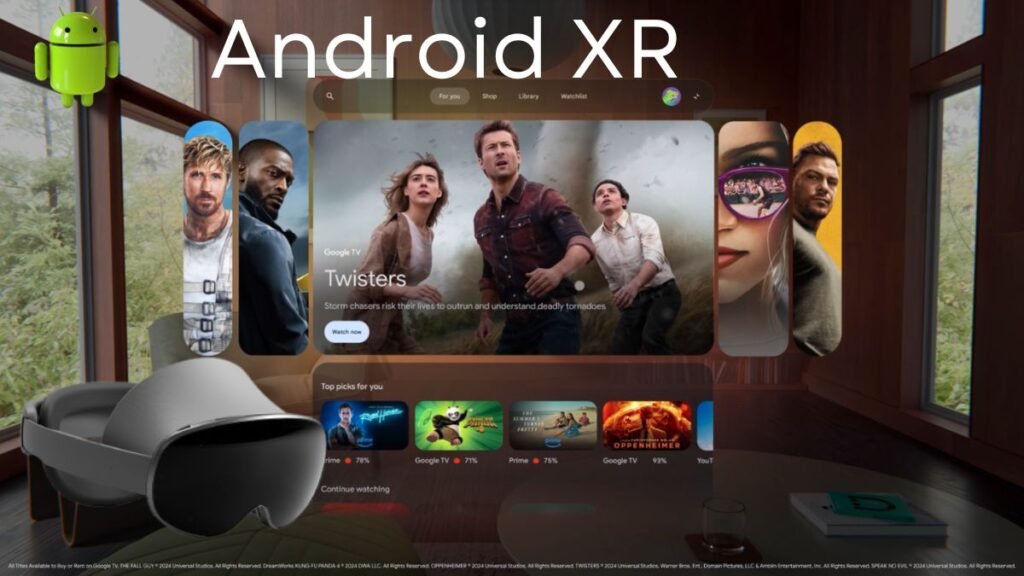Google has long been at the forefront of technological innovation, and its latest endeavor, the Android XR operating system, is no exception. Designed specifically for AR (augmented reality) and VR (virtual reality) devices, Android XR represents a significant leap in the way immersive technologies are developed, deployed, and experienced. As the XR (extended reality) ecosystem continues to expand, Google’s new platform is poised to redefine industry standards and reshape the future of AR and VR applications. Here’s how Android XR could make an impact on the broader industry.
A Unified Platform for AR and VR
One of the key advantages of Android XR is its focus on unifying the development process for AR and VR. Traditionally, developers have faced challenges in creating applications that work seamlessly across different devices and platforms. With Android XR, Google aims to provide a consistent operating system that supports a wide range of hardware, from AR glasses to standalone VR headsets.
This unified approach is likely to lower the barrier to entry for developers by reducing fragmentation. It enables them to build immersive experiences without worrying about device-specific optimizations. By leveraging Android’s existing developer tools and resources, Android XR opens up opportunities for more creators to participate in the XR space, ultimately fostering innovation and growth across the industry.
Seamless Integration with Google’s Ecosystem
Android XR benefits from Google’s extensive ecosystem of services and platforms, including Google Maps, Google Lens, and the Google Play Store. For example, AR applications can integrate real-world navigation features from Google Maps or use Google Lens’s object recognition capabilities to enhance interactivity. By leveraging these powerful tools, Android XR developers can create richer, more immersive experiences that are deeply integrated with users’ everyday lives.
The Play Store integration also simplifies distribution, making it easier for developers to monetize their creations and reach global audiences. This seamless connection to Google’s ecosystem ensures that Android XR is not just a standalone platform but a cornerstone of the broader technology landscape.
Driving Hardware Innovation
Android XR’s launch is expected to catalyze advancements in hardware design and functionality. By providing a robust and adaptable operating system, Google is encouraging manufacturers to push the boundaries of AR and VR device capabilities. From lighter, more comfortable AR glasses to VR headsets with advanced features like eye tracking and spatial audio, the standardization offered by Android XR will likely accelerate hardware innovation.
Moreover, Google’s partnerships with hardware manufacturers could lead to a wave of new devices optimized for Android XR. This collaboration not only ensures compatibility but also creates a feedback loop where software and hardware advancements drive each other forward.
Impact on the Broader Industry
The introduction of Android XR is expected to have a ripple effect across multiple industries:
1. Gaming and Entertainment
With its robust performance and cross-platform capabilities, Android XR is set to revolutionize gaming and entertainment. Developers can create more immersive and interactive games, while streaming services can explore new ways to deliver 360-degree videos or virtual concerts. By enabling more consistent and engaging experiences, Android XR could significantly expand the market for XR entertainment.
2. Education and Training
AR and VR have already begun transforming education and workforce training, but Android XR takes it a step further. Teachers and trainers can design customized experiences that work seamlessly across devices, making it easier to deliver remote learning, simulate real-world scenarios, or provide hands-on practice in virtual environments.
3. Healthcare
From surgical training to mental health therapy, Android XR has the potential to enhance healthcare delivery. The platform’s standardization ensures that medical XR applications can operate reliably on various devices, promoting wider adoption and improved outcomes.
4. Retail and E-commerce
Android XR could redefine online shopping by enabling more realistic product visualization and interactive virtual stores. Retailers can use AR to let customers virtually try on clothing or visualize furniture in their homes, creating a more engaging and personalized shopping experience.
Challenges Ahead
Despite its promise, Android XR faces challenges. Competition from other platforms, such as Apple’s Vision Pro ecosystem and Meta’s investments in the metaverse, could intensify. Additionally, ensuring security and privacy in immersive environments will be crucial to gaining user trust. Google will need to address these concerns while continuing to refine Android XR’s features and capabilities.
Conclusion
Google’s Android XR operating system marks a turning point for the AR and VR industries. By offering a unified, developer-friendly platform that integrates seamlessly with its ecosystem, Google is paving the way for a new era of immersive technology. While challenges remain, the potential for Android XR to drive innovation across gaming, education, healthcare, retail, and beyond is immense. As the XR landscape evolves, Google’s latest venture could be the catalyst that propels the industry into its next phase of growth.
